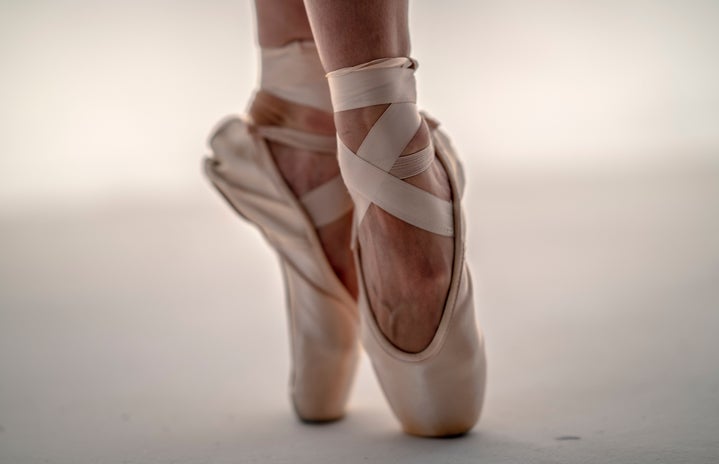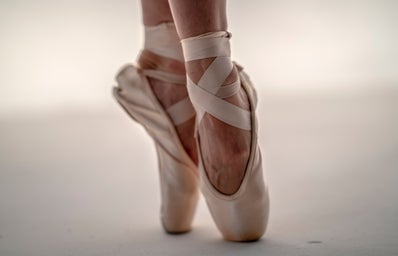If you follow @BallerinaFarm on Instagram, you’ve likely seen the dreamy, carefully curated glimpses into Hannah Neeleman’s life. As an adolescent, the former ballerina trained at New York’s prestigious Juilliard. Now? The 34-year old lives on a 328-acre farm in Utah with her husband, Daniel, and their eight children. Yes, eight children. Her life combines the appeal of rustic farm living with traditional family values and a highly aestheticized online presence, making her quite the polarizing figure. When a viral New York Times profile pulled back the curtain on some lesser-known aspects of her life, people began seriously questioning the reality behind Ballerina Farm’s polished image.
So, let’s rehash some of these details, shall we? Raised Mormon, Hannah met Daniel—also raised in the LDS faith—at a basketball game. Seems innocent enough. While he was immediately enamored with Hannah, she turned down his advances for six months straight. Then, after learning that she would be on a JetBlue flight (the airline that his father owns), he pulled some strings to make sure that he was sitting right next to her, basically forcing his way into a first date. Soon after, they began officially dating. At the time, Hannah was still dancing at Juilliard, one of the most beloved and distinguished programs in the world. She told Daniel that she wanted a year to finish school before they got married. But according to The Times, Daniel insisted that they tie the knot ASAP. Two months after that flight, they wed, and three months later, Hannah was pregnant with their first child.
Already, just hearing the story of how they started dating was more than enough to raise some red flags in my mind. For some, this fast-tracked romance, along with Daniel’s strong persistence, might seem romantic; for others like me, it’s just down-right unsettling. Hannah’s story sits at a complicated intersection: She’s a college-educated accomplished dancer, who left her career behind to raise a large family and live a life grounded in her husband’s vision. Though her lifestyle choices are personal, they inevitably resonate within larger cultural conversations about gender roles and female agency in relationships.
Following the viral profile, Hannah responded in a way she rarely does: directly. She posted an Instagram Reel of her and Daniel working out together, describing them as “co-diaper changers and co-CEOs.” She also updated the “About Us” page on the Ballerina Farm website, detailing how Daniel had moved to New York so she could finish her Juilliard studies. This direct engagement with her critics marks a departure from her usual approach, where she lets her images of sourdough baking, scenic fields, and cozy family scenes do the talking. The truth is, the reality of a highly public marriage, especially one so steeped in faith and tradition, isn’t easily summed up by anecdotes. The nuances of a relationship, particularly one in the spotlight, often resist simplification. Yes, I know that the articles written about her may heighten certain scenarios to make it seem like she is nothing more than her husband’s puppet. And yes, I also recognize that her response to these viral articles and controversies suggests that she did play an active role in choosing her current life path.
Then, why am I still so unsettled by this story?
I can’t help but feel like my emotion comes from her lost career. Hannah Neeleman was an immensely talented ballerina, trained at Juilliard—a dream that so many artists dedicate their entire lives to pursuing. It’s not just that she left it behind, but how quickly she did so.
It’s impossible not to wonder: Did she genuinely choose this path, or was her choice shaped by external pressures—faith, family, societal expectations, and, of course, Daniel? The picture-perfect narrative she shares on Instagram might suggest she has no regrets. But even the most curated feed can’t erase the questions about what might have been. If Daniel hadn’t pushed for an immediate marriage, would she have danced for longer? How many world-class performances were lost when she stepped off that stage for the last time? What art has been left unrealized?
The complexity here is that there’s no wrong answer. Women should have the right to choose whatever life brings them fulfillment, whether it’s raising eight kids in the middle of nowhere or dancing Swan Lake on the world’s most famous stages—or both, if that’s what they want. But Hannah’s story doesn’t exist in a vacuum. It lives at the center of a deeply patriarchal faith, where women are celebrated for their ability to sacrifice personal ambitions for their families.
While she may be thriving on Ballerina Farm, her story is also a reminder of how often women are asked to give up parts of themselves for someone else’s vision of their lives. Maybe Hannah doesn’t miss her old life at all. Maybe she’s truly at peace with the path she’s chosen. But for many of us—especially those who’ve had to weigh our own dreams against societal expectations—the story of Hannah Neeleman feels like a microcosm of a larger cultural struggle. I’m still not over Ballerina Farm because it’s not just Hannah’s story. It’s the story of so many women, constantly navigating a world that tells them they can have it all, but still demands they sacrifice the most important parts of themselves to be fulfilled.


